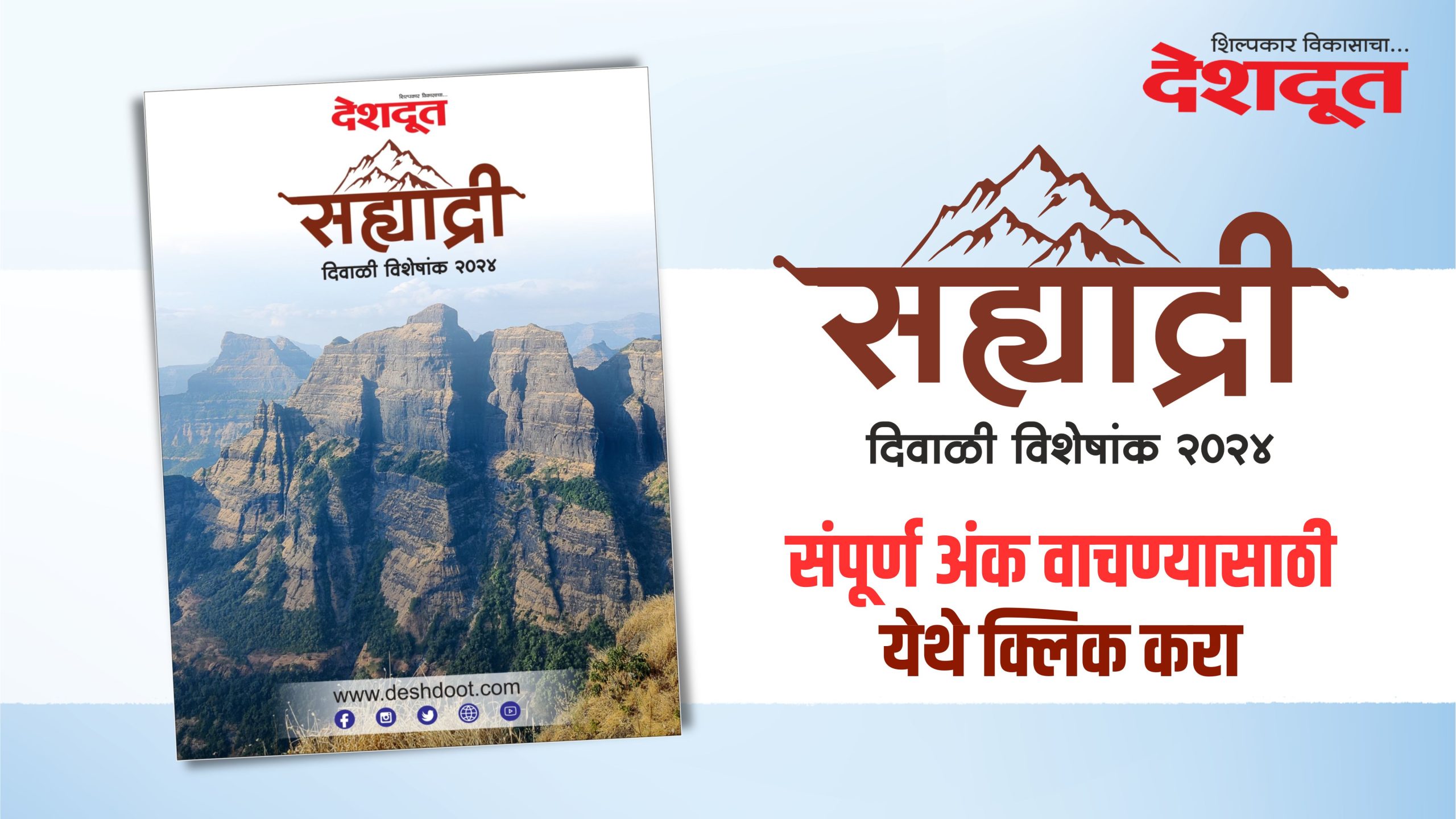Due to the rapid growth of the country’s population, the burden of this growing population on the agricultural sector, increasing urbanization, use of agricultural land for industry and business, as a result the area under cultivation is declining. Untimely hailstorms, cold, unseasonal rains, and temperature fluctuations are signalling global warming.
The soil is getting eroded and the fertile soil layer is diminishing. On the one hand, there is a decline in cultivable area due to various reasons, the deteriorating soil texture is a major challenge facing agriculture today. Therefore, if agriculture is to survive, the soil must survive.
The United Nations has declared 2015 as “World Soil Year” and 5th December has been celebrated as “World Soil Day” for the last five years to create awareness. In the present situation, due to extreme neglect of soil health, soil fertility and productivity has been adversely affected. 16 tons of soil is being carried per hectare every year. Soil organic matter content is very low (up to 0.03%). This has adverse effects on the health of humans, animals and microorganisms. These issues have been noted globally.
Soil health must be maintained in order to balance both food security and safe food. Strict and efficient use of land is required for crop production according to its productivity. For this, soil and water should be tested and chemical fertilizers should be used accordingly. For this, every farmer needs to prepare a health card of his farm land.
Fertile soil is of great importance in the agricultural business. Therefore, it is essential for the farmer to have a thorough knowledge of his soil. Depending on how your soil is, how the water is, what crops should be grown, what nutrients does that crop need when and how much? How much nutrients are available in the soil? Soil health should be maintained while considering which fertilizer can be used for better yield. That too must be considered. The secret of successful farming is to get a good crop from the soil and also to maintain the productivity of the soil.
The survival of the crop depends on the health of the soil and water. Regular soil water test is the key to planned, profitable and sustainable farming. The importance of soil and water testing has become paramount here as more capital has to be invested in modern agriculture. Fertilizer management based on soil testing as well as saving in quantity, it is also possible to give quantity of fertilizers. Therefore, fertility of the soil can be increased. It also helps in maintaining the health of the soil forever. To sustain the soil health, physical, chemical, biological properties need to be maintained.
In sustainable agriculture, soil fertility is maintained by taking advantage of productive yields and using organic and chemical fertilizers in a balanced manner. Soil testing has a unique general importance in fertilizer management. In addition to the major nutrients like nitrogen, phosphorus and potassium, micronutrients are also required for a balanced supply of nutrients to the crop. Therefore, the quantity of chemical fertilizers can be increased or decreased as per the requirement of the crop, so efficient use of chemical fertilizers can be made to get profitable crop production. Also, the economic loss of farmers due to the use of chemical fertilizers can be avoided and the health of the soil can be maintained.
Scenario of Nashik district
Nashik district is situated partly in the Tapi Basin and partly in the upper Godavari Basin. It lies between 19035″ 18” North latitude to 200 53″ 07” North latitude and 730 16″ 07” East longitudes to 740 56″ 22” East longitudes.
The district is drained by two main rivers, viz. Girna and the Godavari and their tributaries. The climate of the district is generally dry except during the South-West monsoon season. The average annual rainfall for the district as a whole is 1035.5 mm. The district forms part of Western Ghat and Deccan Plateau.
Physiographically Nasik district comprises varied topography. The main system of hills is Sahayadri and its offshoots viz., Satmala, Selbari and Dolbari hill ranges. These hill ranges along with eastern and southern plains and Godavari valley are the distinct physiographic units. The northern part of the district falls under Tapi basin and is drained by easterly flowing Girna River along with its tributaries, whereas the southern part of the district falls under Godavari basin an is drained by Godavari River and its tributaries.
Other important rivers in the district are Damanganga, Vaitarna, Darna, Kadva, Aram, Mosam, Panjan and Manegad. The soil of the district is essentially derived from the Deccan Trap which is the predominant rock formation are the weathering products of Basalt and have various shades from gray to black, red and pink color. The soil formation is mainly affected by the climatic condition and topography of the district. The soil in the Godavari, Kadava, upper reaches of the Girna and the Mosam Valley is quite deep and
fertile. The relief in the rest of the district is undulating and susceptible to erosion. Light shallow soil is found on hill slopes and very coarse soils at higher elevation. The soils occurring in the district are classified in the four categories namely lateritic black soil (Kali), reddish brown soil (Mal), coarse shallow reddish black soil (Koral), medium light brownish black soil (Barad). In general, the soils are very fertile and suitable for growing cereal and pulses.
The black soil contains high alumina and carbonates of calcium and magnesium with variable amounts of potash, low nitrogen and phosphorus. The red soil is less common and is suitable for cultivation under a heavy and consistent rainfall.
In Nasik district, red soils are mainly occurring in north-western portion and black soils in south-eastern parts. The red soils are mostly under forest and or marginally cultivated to millets, whereas, the black soils are cultivated to sorghum and pulses (rainfed), and grape (irrigated).
As far the chemical properties of soils in Nashik district the organic carbon content is low to medium. Nitrogen deficiency if found everywhere in all tehsils of the district.
Phosphorus content is moderate in most of the tehsil while potassium content in soil is high in almost all tehsils except Igatpuri and Trimbakeshwar. Salinity is developed in some parts of Godavari basins. There is need to add organic matter in soil every year to maintain the soil fertility and sustainability.
A Journey to Save Soil
With 52% of the agricultural lands already degraded, the soil crisis in the world needs urgent attention. The 100-day, 30,000 km journey to save soil that Sadhguru started off as a lone motorcyclist in March has already crossed the halfway mark. In the last 81 days, after riding through the bone-rattling chill of Europe and the furnace of the Arabian desert, Sadhguru set foot on the soil of India alighting at the Jamnagar port in Gujarat on May 29.
Sadhguru also held Save Soil programme with PM Narendra Modi in New Delhi. While on Saturday (June 11) Sadhguru held an interaction with Nashikites in a ‘Save Soil’ programme, organised jointly by daily Deshdoot and Maratha Vidya Prasarak Sanstha (MVPS). On this backdrop, an article “Soil health management and scenario of Nashik district” by soil scientist Dr. Yogesh Patil will help citizens understand soil scenario of the district.
Nashik district is divided into various Agroclimatic zones
Ghat Zone: Annual rainfall 3000 to 5000 mm., Laterite and non-laterite soils with forest cover, Undulating topography
Tehsil: Igatpuri & Trimbakeshwar
Transitional Zone I: Annual rainfall 1250 to 3000 mm, Reddish brown soils of hilly slopes
Tehsil: Peth & Surgana
Transitional Zone II: Annual rainfall 700 to 1240 mm., medium black soils, plain zone.
Tehsil: Niphad, Sinnar, Dindori some part of Nashik, Baglan, Chandwad.
Scarcity Zone: Annual rainfall 500 to 700 mm., coarse shallow soils, calcareous soils.
Tehsil: Part of Nandgaon, Yevla and Malegaon.
Soil depth tehsil-wise
-
Very shallow: (< 10 cm) Some part of Igatpuri and Sinnar tehsil.
-
Shallow: (10 to 25 cm). Igatpuri, Trimbakeshwar, some part of Dindori, Kalwan, Nadgaon, Malegaon, Deola, Chandwad and Nashik
-
Moderately deep: (25 to 50 cm) Some Part of Igatpuri, Peinth, Surgana, Kalwan, Baglan, Devla, Yevla and Nadgaon.
-
Deep: (50 to 100 cm) Some part of Dindori, Deola, Chandwad, Niphad,Yevla and Nandgaon
-
Very Deep:(> 100 cm) Most part of Niphad, Some part of Sinnar and few part of Dindori, Malegaon, Yevla, Bglan and Kalwan.
Soil texture tehsil-wise
-
Light soils: Igatpuri, Trimbakeshwar, Peinth, Surgana, Kalwan, Baglan some part of Malegaon, Nadgaon, Sinnar and Yevla
-
Medium soils: Few part of Nashik district
-
Heavy soils: Most part of Niphad, some part of Dindori & Sinnar, few parts of Baglan, Devla, Nadgaon and Kalwan tehsil.
– Dr. Yogesh J. Patil, Soil Scientist, Agricultural Research Station, Niphad (Nashik)






